You are here
New Releases
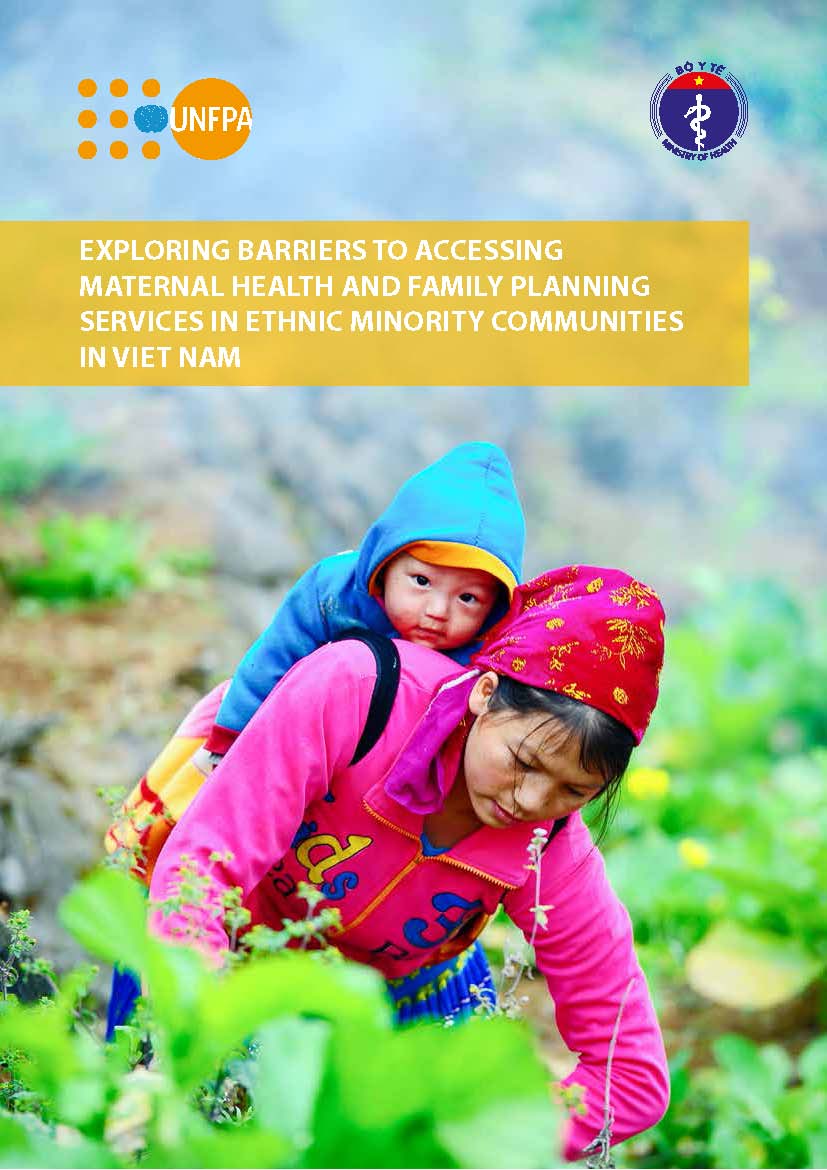
Exploring barriers to accessing maternal health and family planning services in ethnic minority communities in Viet Nam
This research study was supported, and the scope of the study developed, by the Ministry of Health and the United Nations Population Fund (UNFPA) in Viet Nam. It was implemented and managed by the University of Toronto in collaboration with the Mekong Development Research Institute. It is our hope that this report proves useful to policy makers, programme managers, health professionals, researchers and donors in designing and implementing effective reproductive health programmes in order to achieve the ultimate objectives of the International Conference on Population and Development and the Sustainable Development Goals in Viet Nam.
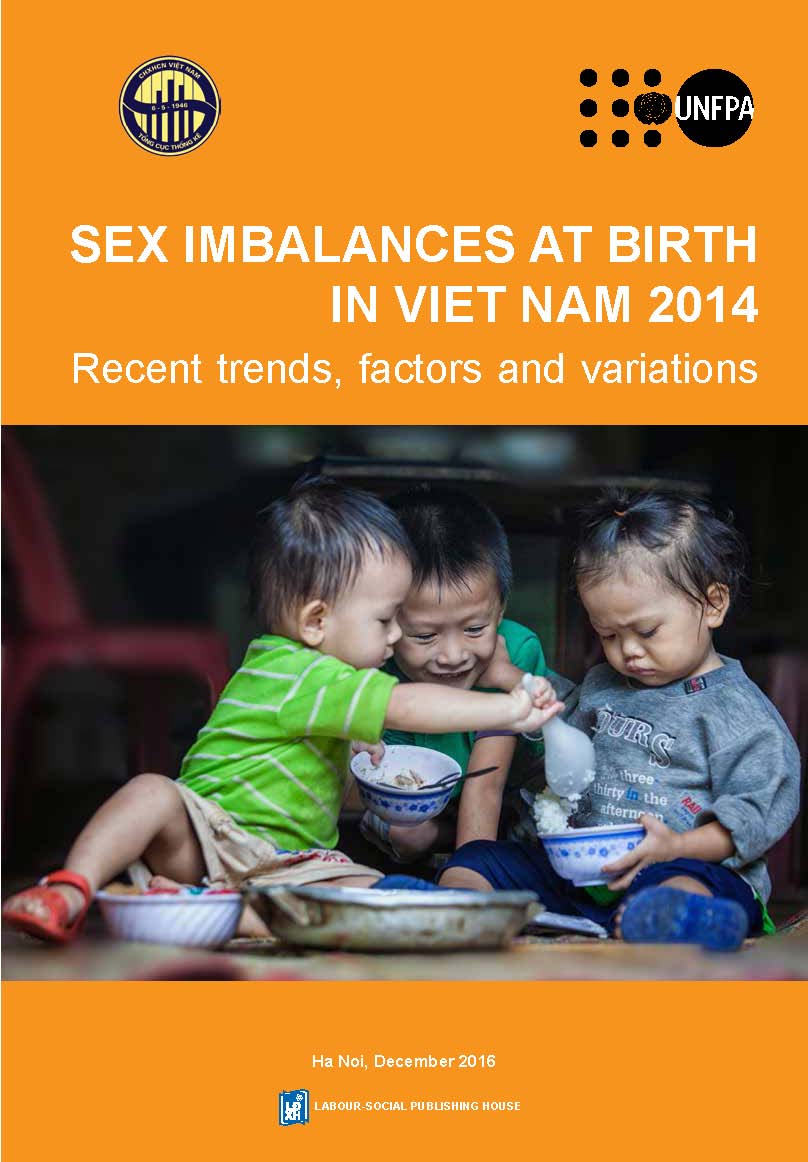
Sex Imbalances at Birth in Viet Nam 2014 Recent trends, factors and variations
This monograph was developed using the data from the 2014 IPS and 2009 Census to provide the most updated information about an emerging issue that has received great attention from policymakers in Viet Nam. It illustrates the differences of this ratio among regions and population groups, the relationship between socio-economic and demographic factors and sex imbalance at birth in Viet Nam. More specifically, the results help us understand the extent of son preference reflected in reproductive behaviours, and the trend of its diffusion across different population groups. It also proposes some recommendations to address the sex imbalance at birth issue in Viet Nam, and emphasizes the necessity to have information on aspects of social changes and their impacts on son preference to identify factors relating to gender equality in Vietnamese families.
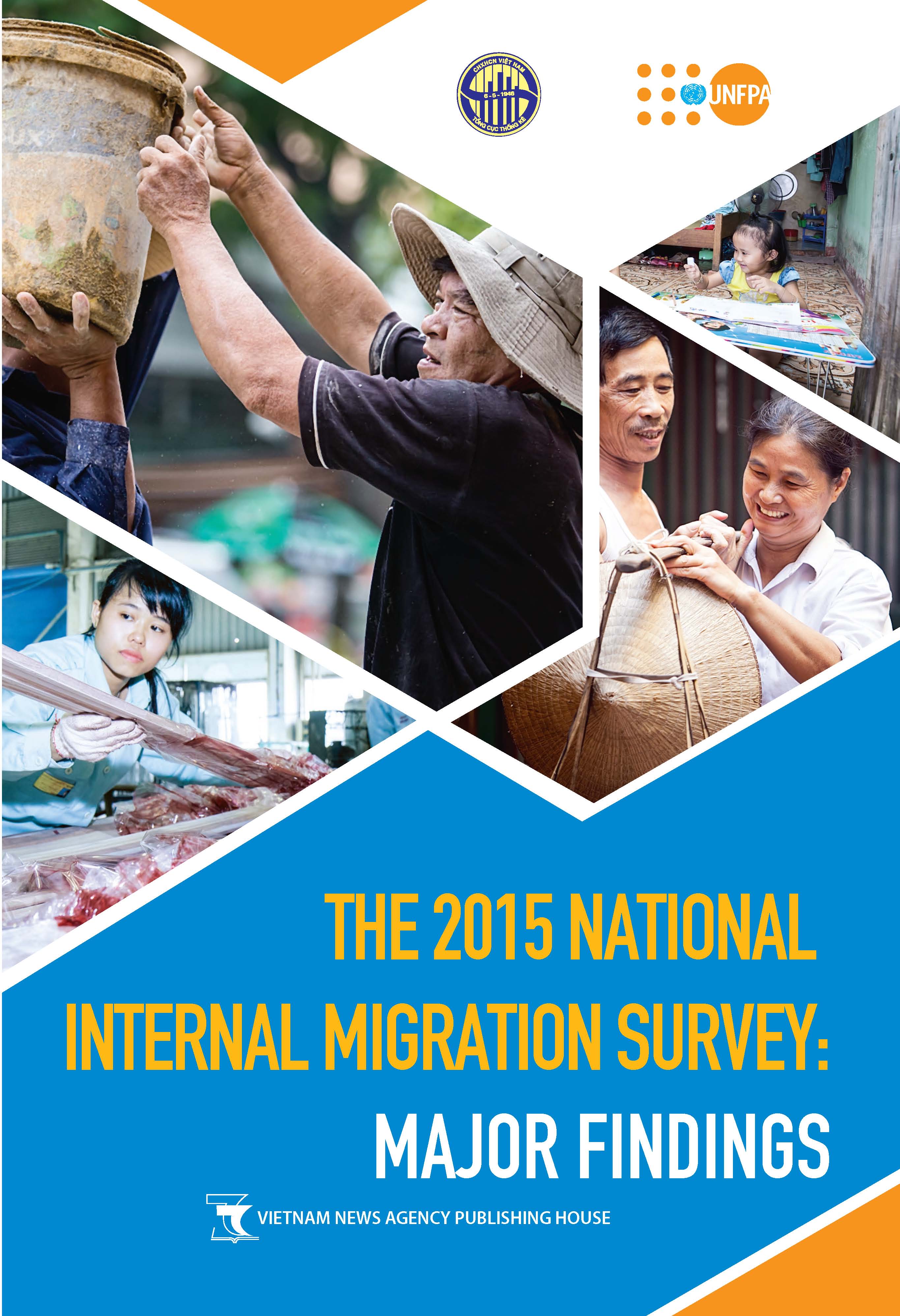
The 2015 National Internal Migration Survey: Major findings
The report includes eight chapters: Chapter 1: Introduction, Chapter 2: Types of migration, characteristics and living onditions of households, Chapter 3: Characteristics of migrants and non-migrants, Chapter 4: Migration determinants, Chapter 5: Satisfaction and difficulties associated with migration, Chapter 6: Economic activities and living condition, Chapter 7: Health, Chapter 8: Conclusion and policy recommendations.
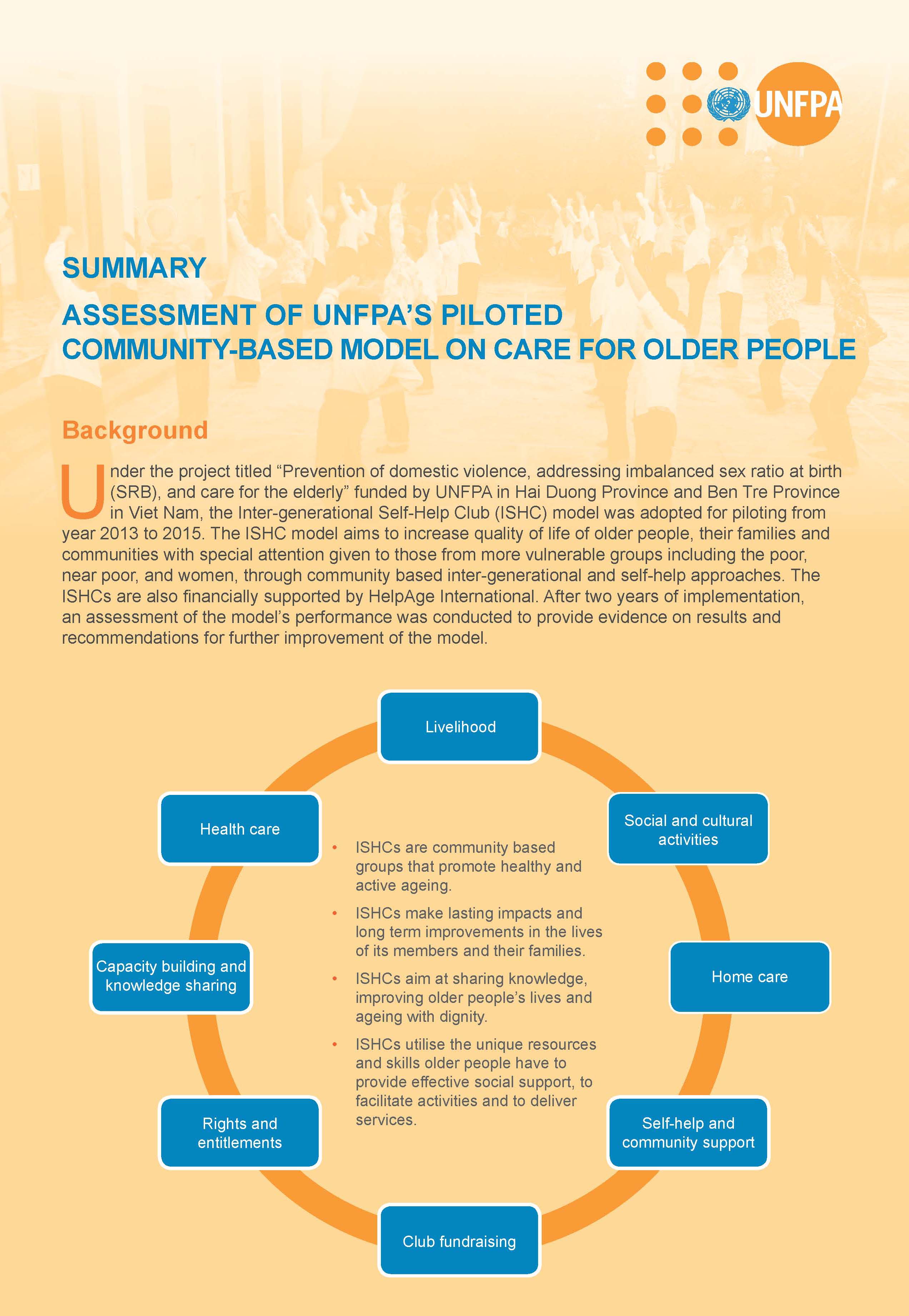
Assessment of UNFPA's piloted community-based model on care for older people
Under the project titled “Prevention of domestic violence, addressing imbalanced sex ratio at birth (SRB), and care for the elderly” funded by UNFPA in Hai Duong Province and Ben Tre Province in Viet Nam, the Inter-generational Self-Help Club (ISHC) model was adopted for piloting from year 2013 to 2015. The ISHC model aims to increase quality of life of older people, their families and communities with special attention given to those from more vulnerable groups including the poor, near poor, and women, through community based inter-generational and self-help approaches. The ISHCs are also financially supported by HelpAge International. After two years of implementation, an assessment of the model’s performance was conducted to provide evidence on results and recommendations for further improvement of the model.
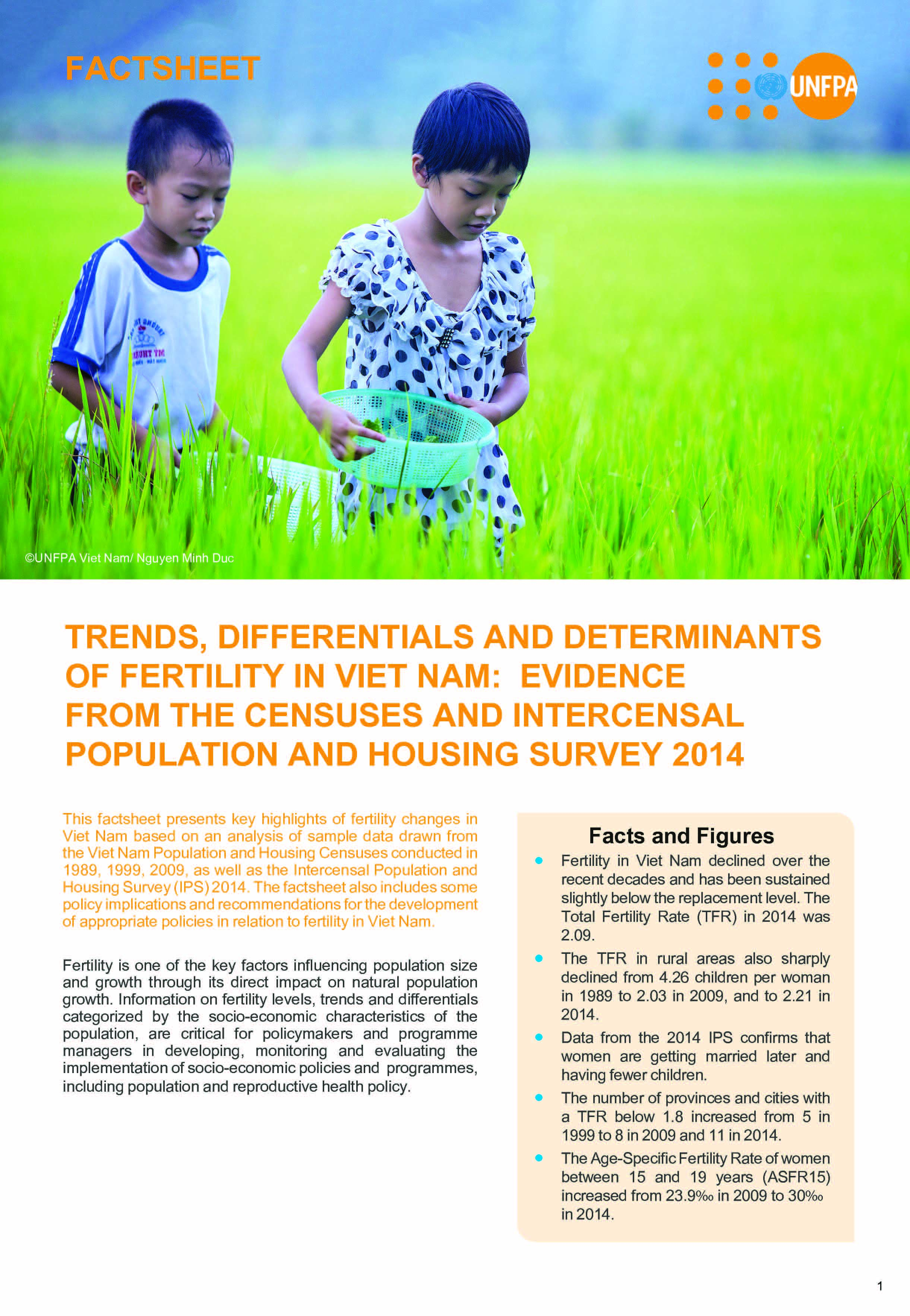
Trends, Differentials and determinants of fertility in Viet Nam: Evidence from the Censuses and intercensal population and housing survey 2014
This factsheet presents key highlights of fertility changes in Viet Nam based on an analysis of sample data drawn from the Viet Nam Population and Housing Censuses conducted in 1989, 1999, 2009, as well as the Intercensal Population and Housing Survey (IPS) 2014. The factsheet also includes some policy implications and recommendations for the development of appropriate policies in relation to fertility in Viet Nam.
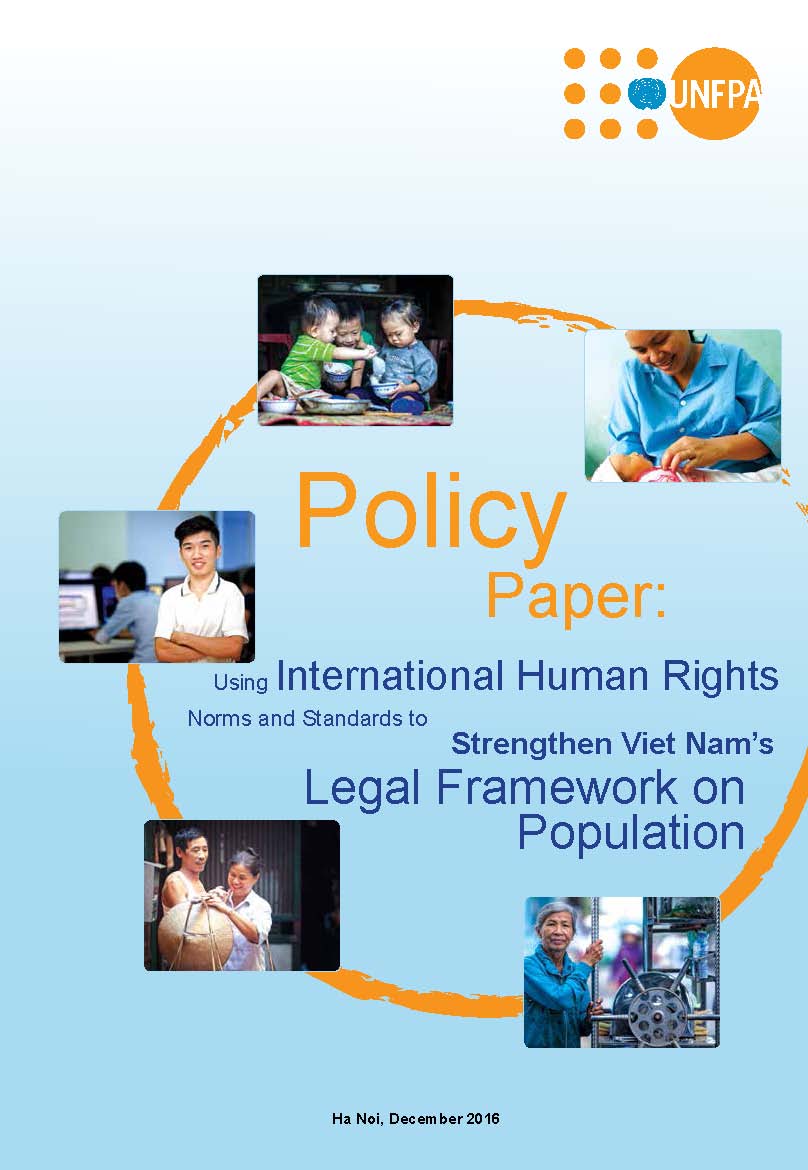
Using International Human Rights Norms and Standards to strengthen Viet Nam's Legal Framework on Population
This report emphasizes how human rights norms and principles can be used in every stage of policy development and implementation toward strengthening the Viet Nam’s population law and related policies in its new demographic context to ensure continued and sustainable success. The key message of this report is that developing a robust legal framework that integrates population policy goals, international human rights norms, and effective development policy is a potential area of leadership for Viet Nam. Viet Nam’s development of human rights-based population law, related policies and programmes will help the country address the range of its demographic concerns, improving the lives of all people.
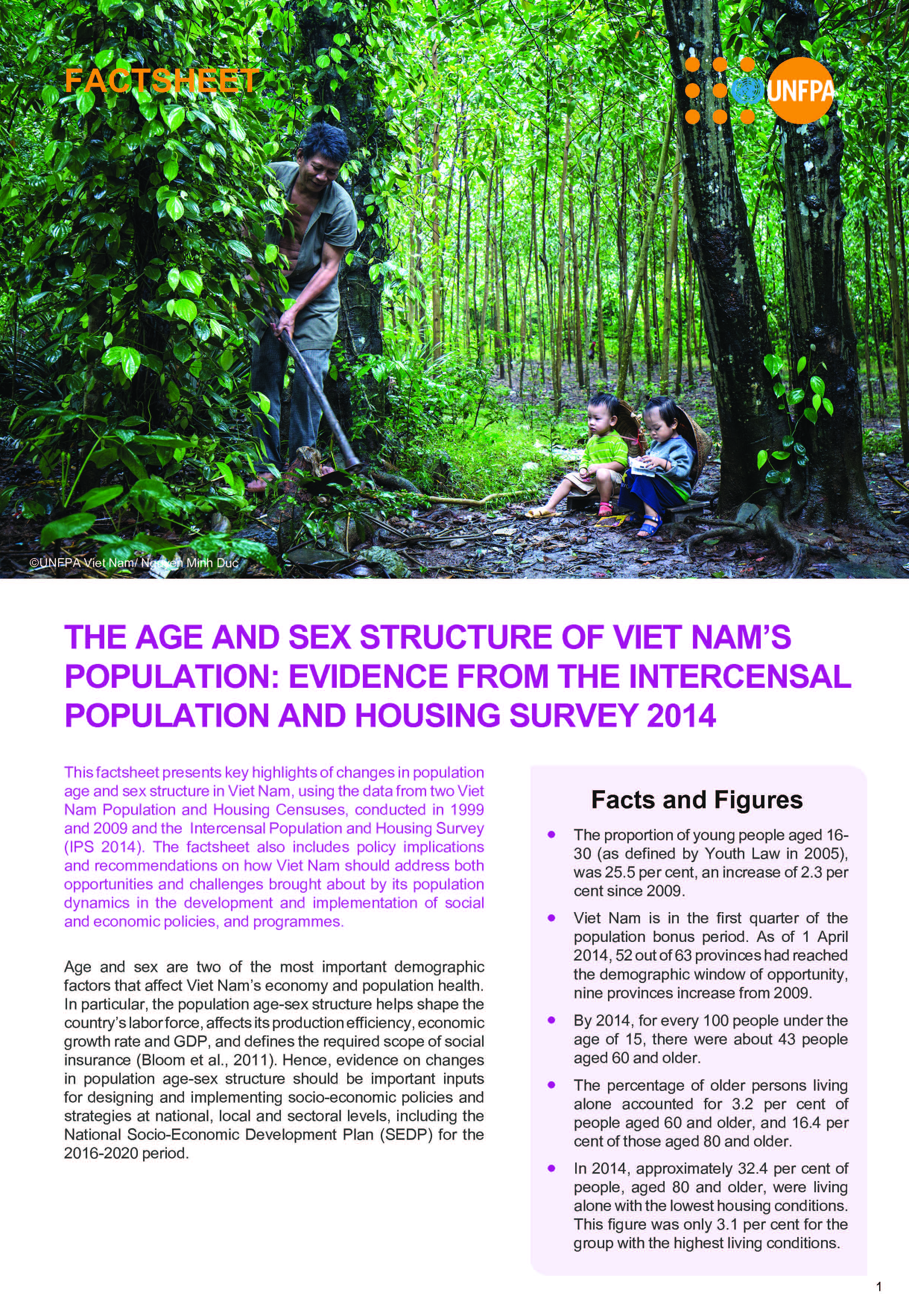
The age and sex structure of Viet Nam's population: Evidence from the Intercensal Population & Housing Survey 2014
This factsheet presents key highlights of changes in population age and sex structure in Viet Nam, using the data from two Viet Nam Population and Housing Censuses, conducted in 1999 and 2009 and the Intercensal Population and Housing Survey (IPS 2014). The factsheet also includes policy implications and recommendations on how Viet Nam should address both opportunities and challenges brought about by its population dynamics in the development and implementation of social and economic policies, and programmes.
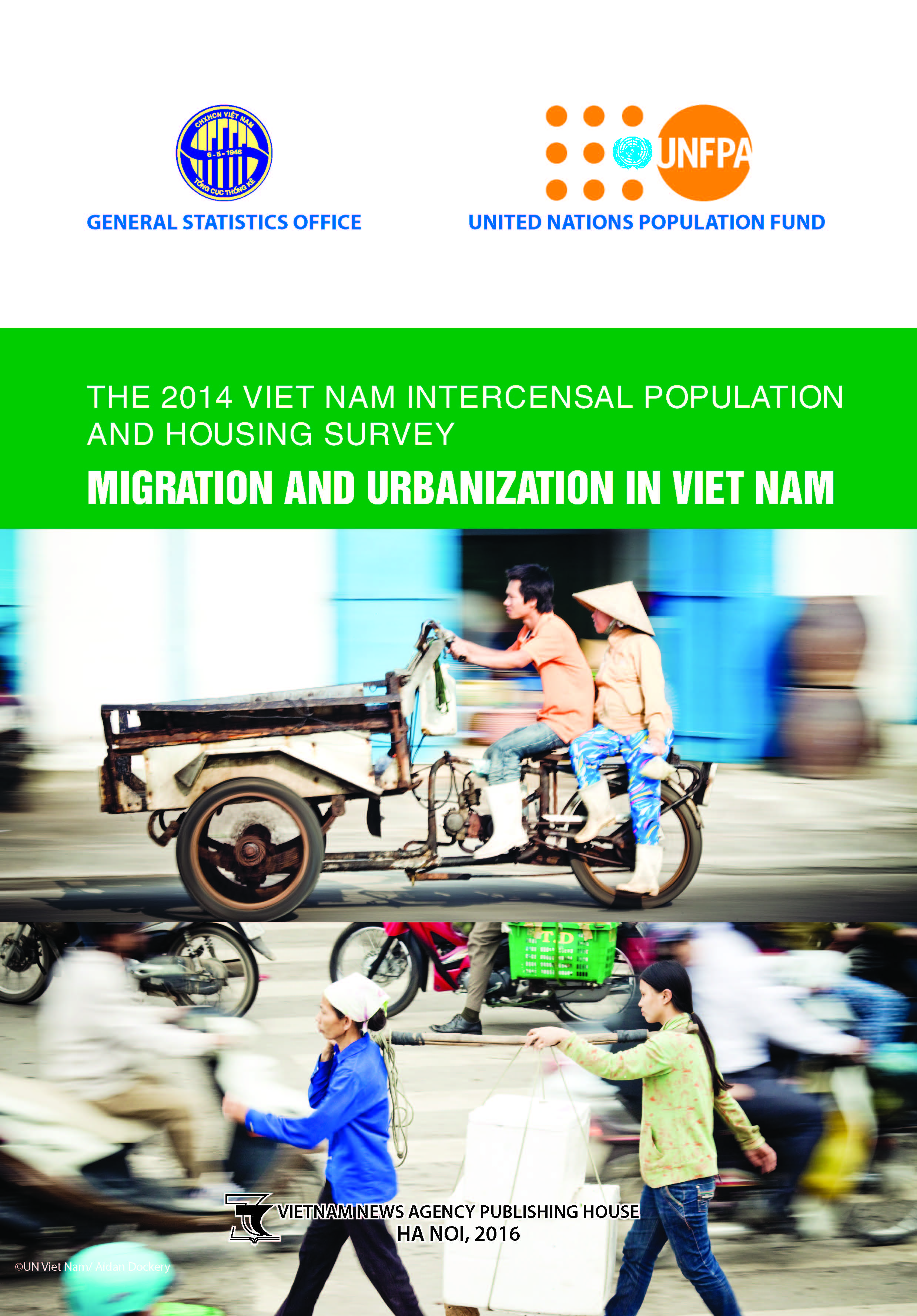
Migration and Urbanization in Viet Nam
This monograph was developed based on data from the 1/4/2014 Intercensal Population and Housing Survey in order to provide readers with the most up-to-date information about migration and urbanization in Viet Nam.
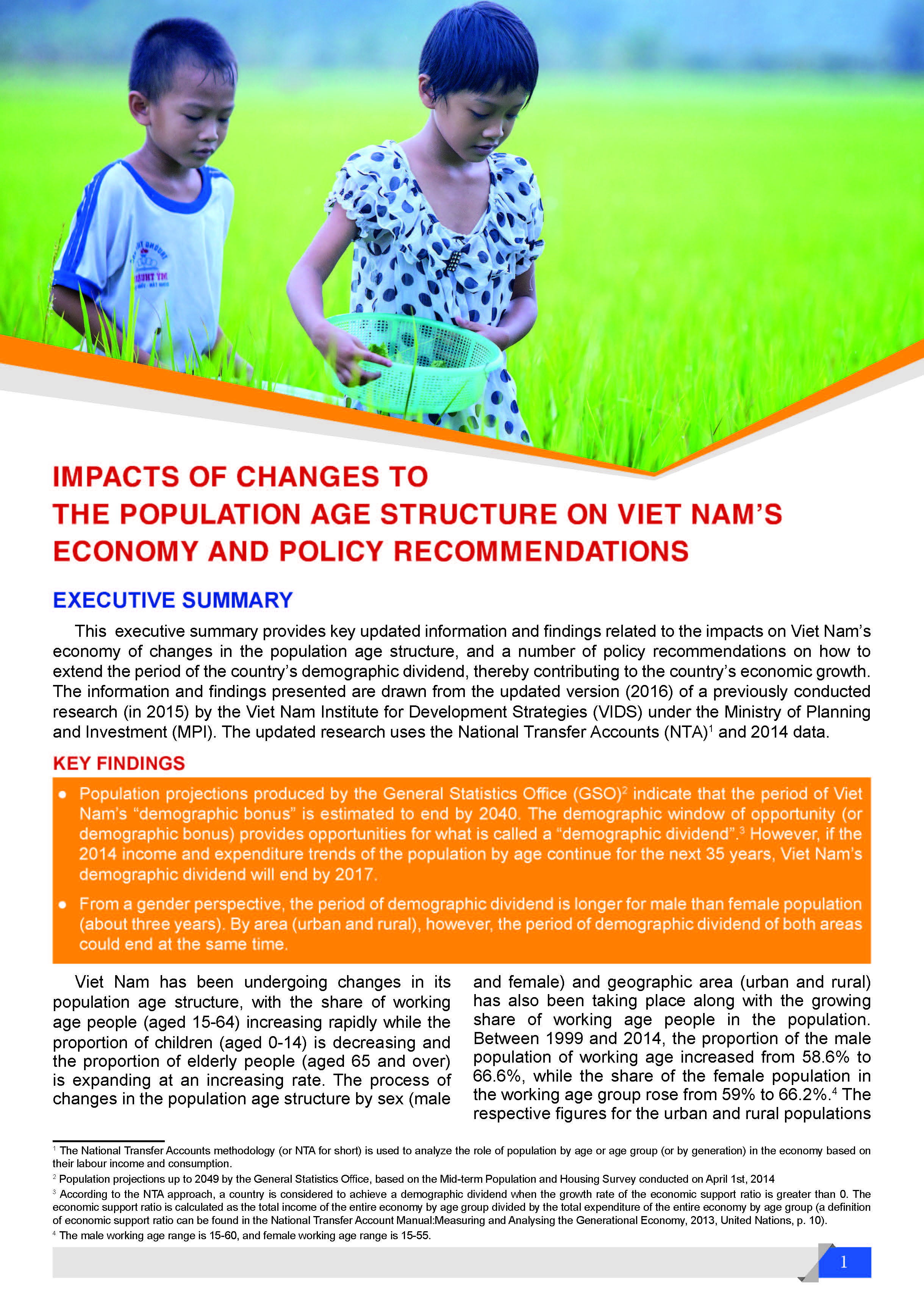
Impact of changes to population age structure on Viet Nam's economy and policy recommendations
This executive summary provides key updated information and findings related to the impacts on Viet Nam’s economy of changes in the population age structure, and a number of policy recommendations on how to extend the period of the country’s demographic dividend, thereby contributing to the country’s economic growth. The information and findings presented are drawn from the updated version (2016) of a previously conducted research (in 2015) by the Viet Nam Institute for Development Strategies (VIDS) under the Ministry of Planning and Investment (MPI). The updated research uses the National Transfer Accounts (NTA) and 2014 data.
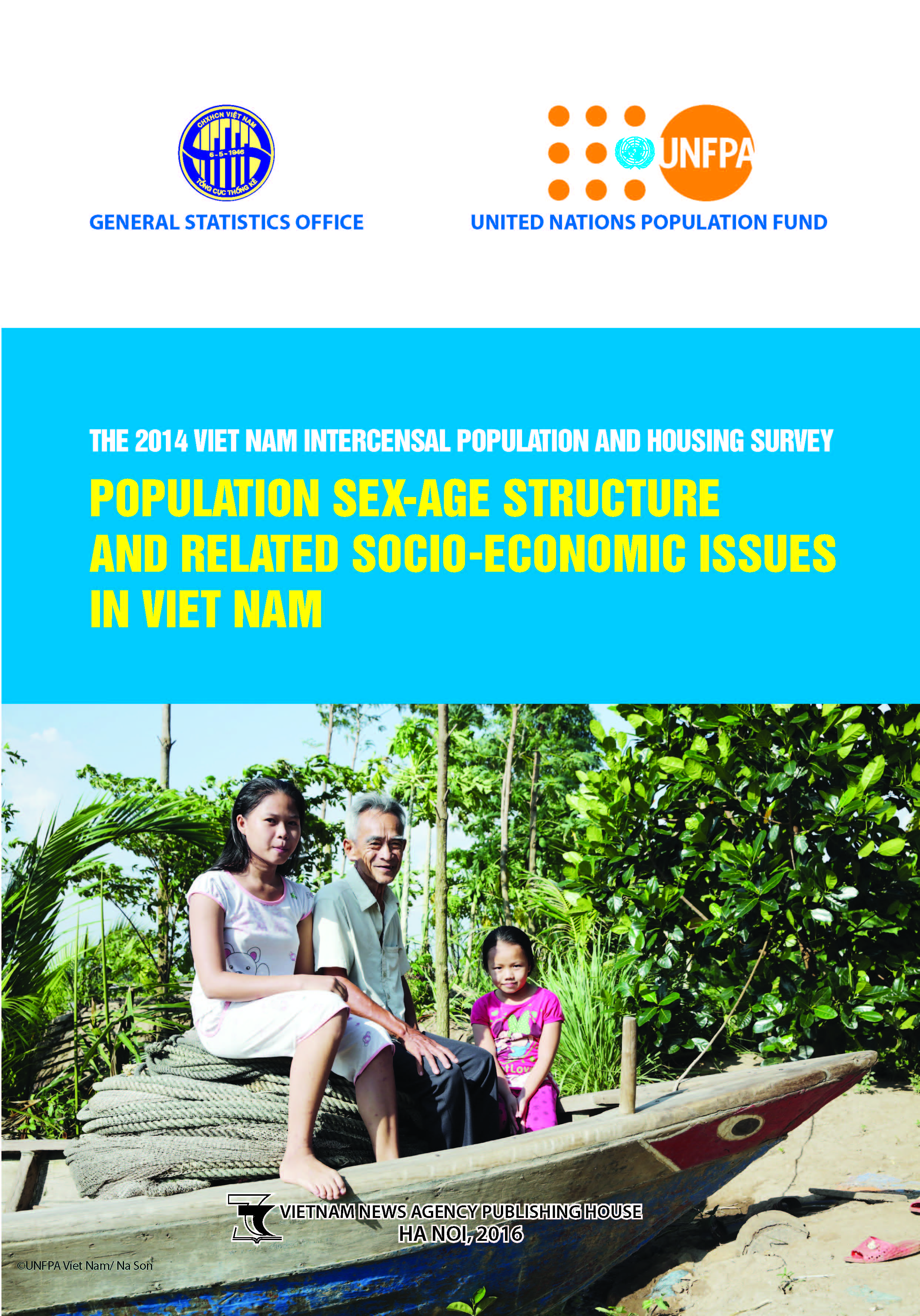
Population sex-age structure and related socio-economic issues in Viet Nam
Results from the data analysis show that the age-sex structure of the population in Viet Nam is typical for the period of transition from high to low mortality and fertility. The analysis provides evidence related to important demographic issues such as the “demographic window of opportunity”, population ageing, youth, single elderly differences between regions and population groups, and factors that affect the sex-age structure.It also provides policy recommendations in order to meet the needs of a demographic change.